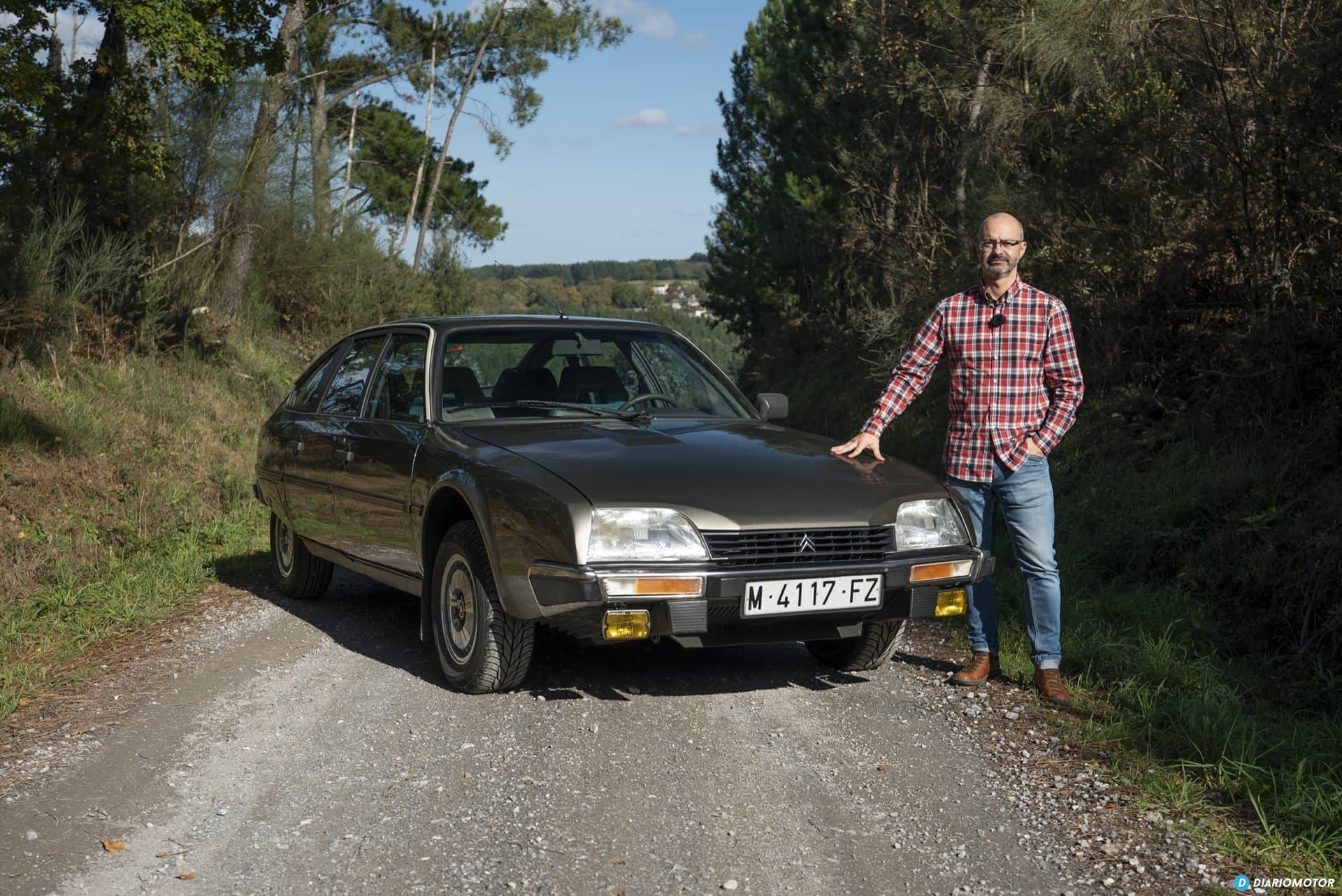He Citroen CX was born in 1974 with the difficult mission of replacing the irreplaceable Citroën DS, but it does so with such a high level of technology, innovation and futuristic approach that it becomes a luxury vehicle admired by all from the first moment. We have been able to analyze and test this precious unit in version CX 25 GTI from 1983 and, in addition to telling you all the details of the car, I will try to explain why I think it is the last great French saloon. Let’s start!
The Citroën CX outside
The exterior design of the Citroën CX looks futuristic even today. It is a spectacular car, sharp and unique in its shape and proportions.
More aerodynamic than its predecessor, the CX gets its name from the aerodynamic drag coefficient and reaches a figure of 0.36 that today it would be modest but in 1974 it was much better than that of its predecessor.
The CX loses the frameless windows of the DS, it also loses the directional headlights or the indicators on the roof, but integrates innovations such as the single-arm wiper blade with integrated nozzlethe convex rear window or the removable piece of the rear wheel fairing (which would disappear with the CX).
Its originality is remarkable, its elegance too, and it still has noble details such as the stainless steel fenders.
The Citroen CX inside
The interior of the CX is fully consistent with its exterior: futuristic, innovative and full of original details.
Call attention to your “concentrated” dashboard that extends to the side satellites where all the controls are within easy reach.
The dashboard is drum, it is the numbers that turn and the needle that remains motionless. It is an eccentricity that is not at all practical, it is not very legible (especially the rev counter) and perhaps it does not make any sense, but it is so original that it is charming. The second generation of the CX would no longer carry this exotic frame, giving way to traditional watches.
The subject of satellites within easy reach seems very ergonomic but in practice it is somewhat confusing, precisely because of the accumulation of functions in little space and the impossibility of seeing the symbols that indicate each function. It is a system that requires training to know where everything is, but once you get over the learning curve and if you are able to remember each command by heart, it will probably be quite satisfactory to use.
The rest of the cabin is very empty of controls, finding the main ones in the center console. There we have an automatic climate control and the control of the hydropneumatic suspension in which we select the height of the car between 4 possible positions, in addition to the electric windows in the 4 doors.
The hydraulics of the CX: DIRAVI steering, brakes and hydropneumatic suspension
The mechanical key to the Citroën CX, beyond an engine that is not particularly modern even for the time despite having injection, is its high-pressure hydraulic system that powers the steering, brakes, and suspension. Its predecessor, the Traction Avant, was the pioneer in having hydropneumatic suspension, although the DS was the first to have a circulatory system more typical of a living being than of a car. The CX has what we could understand as “version 3.0”, more sophisticated than its contemporary GS.
The hydraulic circuit is unique and it is fed by a pump and two accumulators, which provide irrigation to the steering, brakes and suspensions, generating a car with a more than peculiar touch.
Beginning with the direction, we are before the legendary DIRAVI of Citroëna forced return to center system that has two particularities: the first is that the steering wheel returns to center itself even when stationary, the second is that it keeps us totally disconnected from the road, since the mechanism is purely hydraulic and cushions any irregularity of the terrain and the third is that it has variable assistance with speed.
The result is an address that keeps the car in a straight line no matter what happens on the asphaltwithout his driver even finding out that he has overcome a sinkhole that would lead to other cars in the ditch.
The brakes have a very different touch to everything known, having a pedal without travel that “nails” the car just by caressing it. Once you get used to it, they give the driver great security, although his power is a bit surprising during the first stops.
The suspension is the well-known Citroën hydropneumatic suspension, which ends in spheres with gas and the hydraulic circuit itself separated by a membrane. The gas would be the “spring” while the liquid regulates the height of each wheel, levels the car regardless of the load and acts as a shock absorber.
The Citroën CX behind the wheel
Once up and running, we have the two intermediate heights to circulate out of the four possible The lowest is a resting position with the car at ground level and the highest has practically no cushioning and is only used to load the car more comfortably or to drive very slowly on very uneven terrain or over some stone or specific obstacle. .
The CX is a real flying carpet capable of isolating us as few cars have done in automotive history, and this despite the fact that our version is the GTI, with a firmer damping rate than the rest of the range.
The CX is a tireless roller that protects you from the outside with fabulous insulation (except for the engine noise), with infinitely soft seats and more than respectable performance. This GTI was the Citroën sedan to exceed 200 km/h, it accelerates from 0 to 100 km/h in 9.2 seconds and recovers very well thanks to its 2,500 cm 4-cylinder engine3. Despite being atmospheric, it has a remarkable recovery capacity thanks to its displacement.
It was the first Citroën saloon to reach 201 km/h
When you get to the curves it is a very stable carbut it has the great handicap of its own isolation and imprecision of the direction, which takes it away from any sensation of sportsmanship and returns us to its straight-line rolling nature.
The last great French saloon?
The Citroën CX was the last authentic and genuine Citroënlaunched in 1974, just before, in 1976, the company was integrated into the PSA group with Peugeot. This shareholding change meant a paradigm shift at Citroën, which resulted in a thorough review of production costs and the entry of rationality over innovation.
The proof that the Citroën CX is the last great Citroën saloon and therefore the last great French saloon is that its successor, the Citroën XM, had the circular air conditioning controls of the Peugeot 205.
Game Over.
















